If you let your battery run down, it's going to need a jump start. But what does it mean when your battery seems to need this service regularly? If you own a Chrysler Pacifica that has a battery that's always dying, we can help you. We researched this vehicle in depth so that you'll know what you need to do.
There are several reasons why the battery in your Chrysler Pacifica keeps dying. This happens when:
- There is a loose battery cable
- Corrosive material is built up on the battery terminals
- Your vehicle is being subjected to weather extremes
- The alternator is faulty
- A parasitic drain exists
- You are taking a lot of short trips on an old battery
Now that we know why the battery in your Chrysler Pacifica keeps dying, we can take a look at each cause in more detail. You might also be curious why the Pacifica has two batteries or how long a battery will last in this vehicle. For the answers to these questions and more, read ahead in this post to see what our research has uncovered.
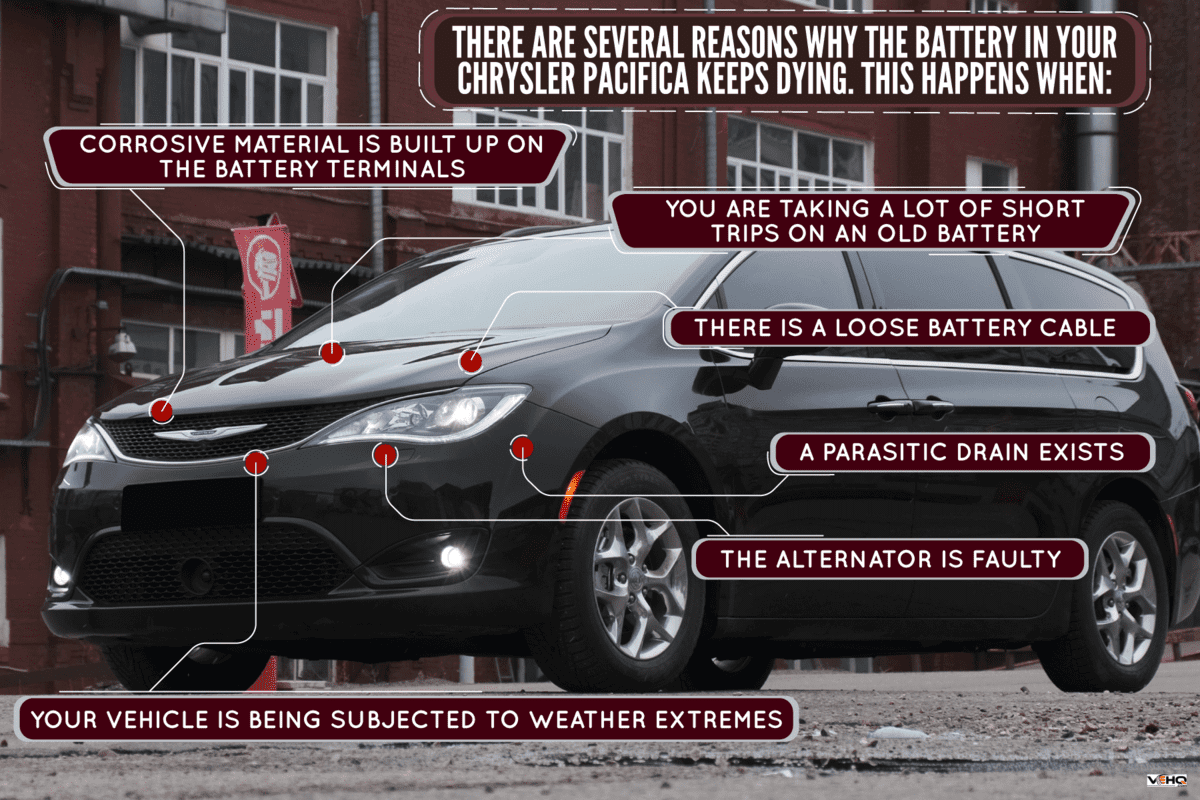
What To Do About Your Dying Chrysler Pacifica Battery
Knowing why the battery in your Pacifica keeps dying is only the beginning of the battle. Once you've determined the cause, you'll have to remedy the issue so that it can be resolved.
As most of the problems for a draining battery won't solve themselves, it'll be up to you to apply the knowledge we've presented to keep your battery charged and your vehicle on the road.
Here we'll discuss in further detail the most common reasons why your Chrysler Pacifica battery has been dying.
There Is A Loose Battery Cable
Loose battery cables can happen over time. If your Chrysler Pacifica battery isn't able to turn the engine over, the cables should be the first thing that you check.
These cables should fit firmly on the battery terminals. If they have loosened up over time, it can interfere with the operation of the battery. Thankfully, this can be fixed in just a few moments.
Typically, you'll only need a flat-bladed screwdriver for this task. You can tighten the cables onto the terminals. This will complete the battery's circuit, allowing the vehicle to start.
Corrosive Material Is Built Up On The Battery Terminals
But what if the cables are secured in place? The connection could still be the issue. Inspect the cables and terminals for corrosive material buildup. If you see any gunk built up on them, this can certainly make it harder to start your Pacifica.
Using gloves, club soda, and a stiff brush, clean the corrosive buildup off the battery terminals and cables. If the buildup is extreme, you will need to disconnect the battery terminals and thoroughly clean each of the battery cables.
Reattach the battery terminals and cables, securing them into place. Your Pacifica should start.
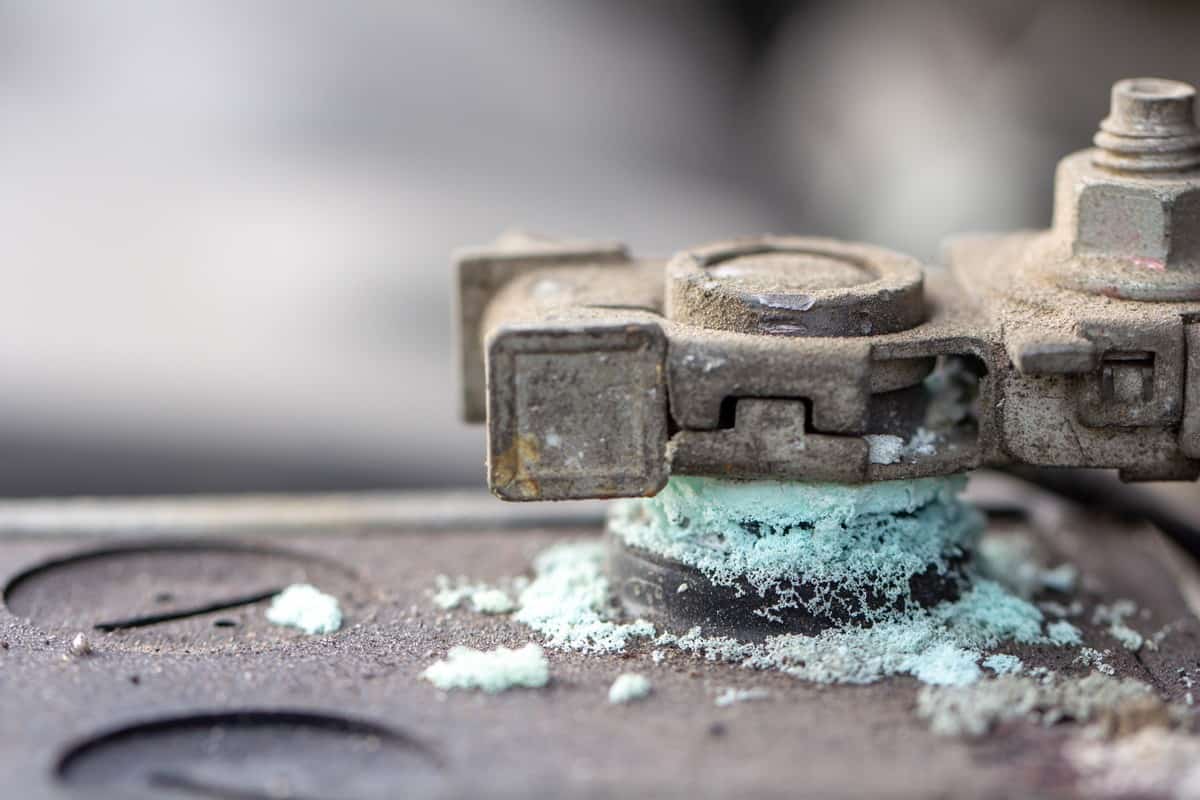
Your Vehicle Is Being Subjected To Weather Extremes
You might not realize it, but batteries are weakened by extreme temperatures. If your Pacifica is in a sub-zero area, it can zap the battery, making it necessary to charge it.
Additionally, if your Pacifica is in an area that has temperatures over 100 degrees, the climate can also take its toll on your battery.
Plan your trips carefully, and keep a portable battery charger handy just in case you should need it.
The Alternator Is Faulty
Sometimes, it's not the battery that is the issue. The battery relies on the alternator to constantly recharge it while the engine is running. If the alternator is faulty, then the battery will not get the juice it needs. This drained battery will make it difficult—or impossible—to start your Pacifica the next time you turn your key.
If the connections to the battery are clear but you are still having issues with the battery dying, have your alternator inspected by a trusted mechanic or the dealership.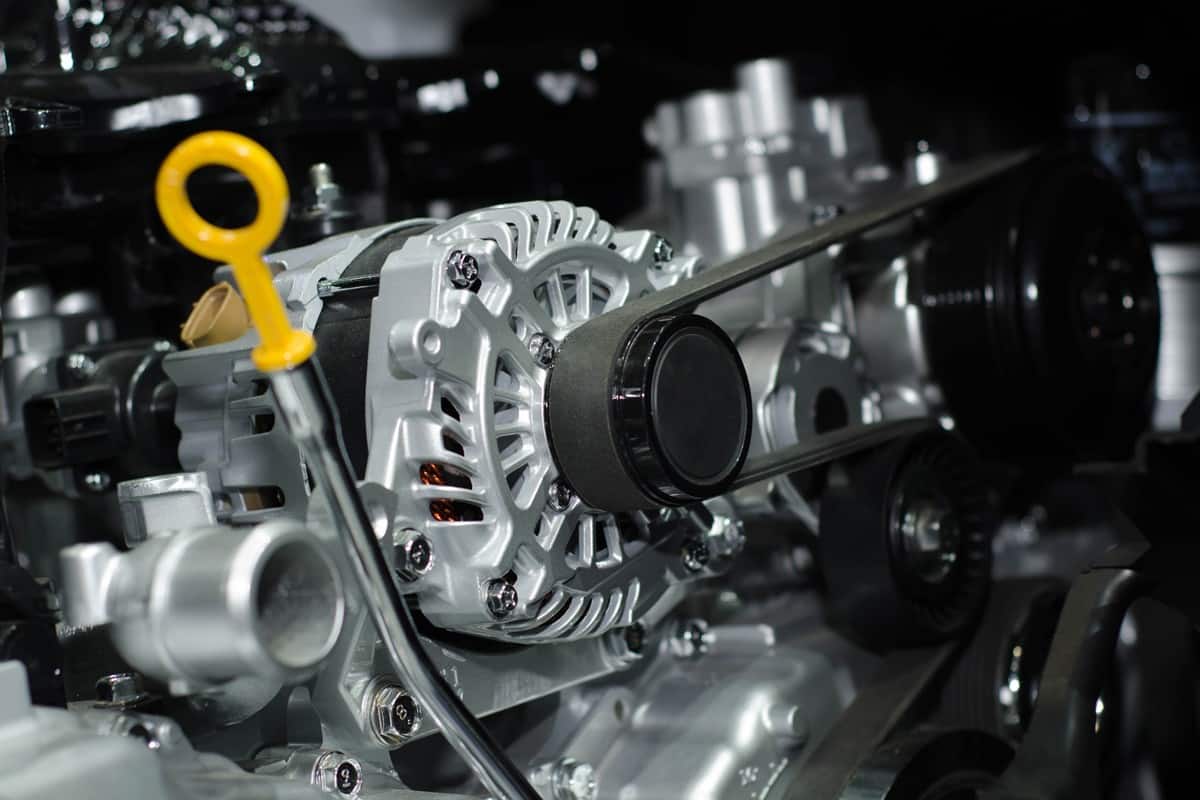
A Parasitic Drain Exists
Most everyone knows that if you leave your lights on without the engine running that the battery will drain. Any use of electricity without the alternator reviving the battery will do this.
And though the headlights are the culprit we most often think of, there are several items onboard your Pacifica that could be draining the battery.
If a dome light is left on, it will use the battery's charge. Should you not have the key turned off, some of the onboard accessories will continue to use the battery's energy as well.
Additionally, there could be a short in the electrical system that drains the battery when the engine is shut off.
You Are Taking A Lot Of Short Trips On An Old Battery
The alternator will work to recharge the battery but only when the engine is running. So, if you are taking a lot of short trips, say a few blocks, then the alternator might not have enough time to give the battery the charge that it loses.
On older batteries especially, this can be a problem. These will not hold the charge that they did when they were new, making short trips a real detriment to keeping them charged.
Minimize your short trips whenever possible. This will not only preserve your battery but will also be better for the fuel economy of your Pacifica.
How Long Does The Battery In A Chrysler Pacifica Last?
The battery's life in the Pacifica will have a range of three to five years. This is typical for almost any passenger vehicle, no matter the model.
How the battery is treated will determine what side of the age range you can expect. If you are draining your battery often by leaving lights on, the radio on, etc. without the engine running, the battery will weaken and not last as long. Extreme temperatures will also zap the battery of some of its life.
But if you take good care of your battery and are careful to not have the onboard electronics drain it of its power, then you can expect the Pacifica's battery to last closer to the five-year mark or longer.
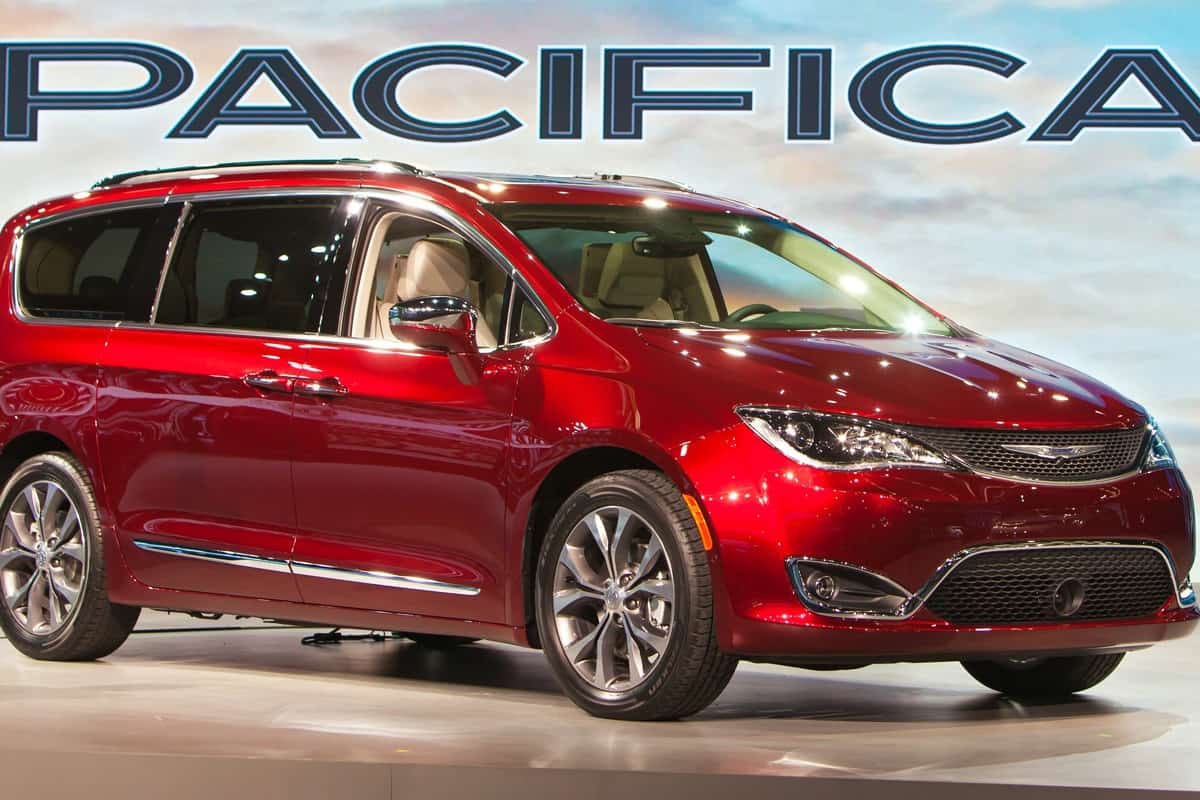
Why Does The Chrysler Pacifica Have Two Batteries?
In traditional passenger vehicles, one battery has been the standard. This lone part supplies all of the electrical power needed to not only turn over the engine but to power all of the onboard electronics.
Cars these days seem to have an endless supply of features that require battery power. This goes beyond just lights and the radio—alarms, charging ports, navigation, and countless other amenities rely on electricity to work. This puts a lot more strain on just one battery, particularly in larger vehicles.
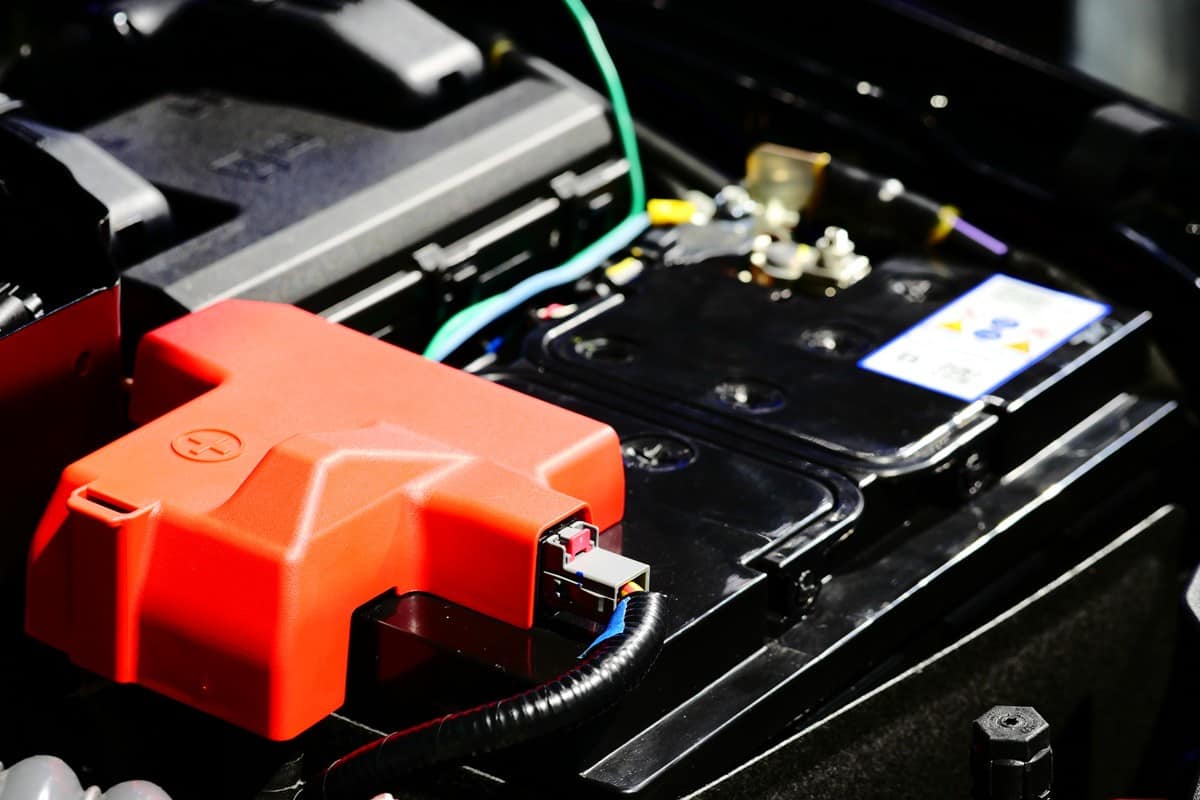
This is why the Pacifica was made with two batteries. The traditional battery is used to turn over the engine. The second battery serves as more of an auxiliary battery. It is used to power most, if not all, of the onboard electronics. This saves the main battery from a lot of extra work.
Both batteries are powered by the alternator when the engine is running.
Final Thoughts
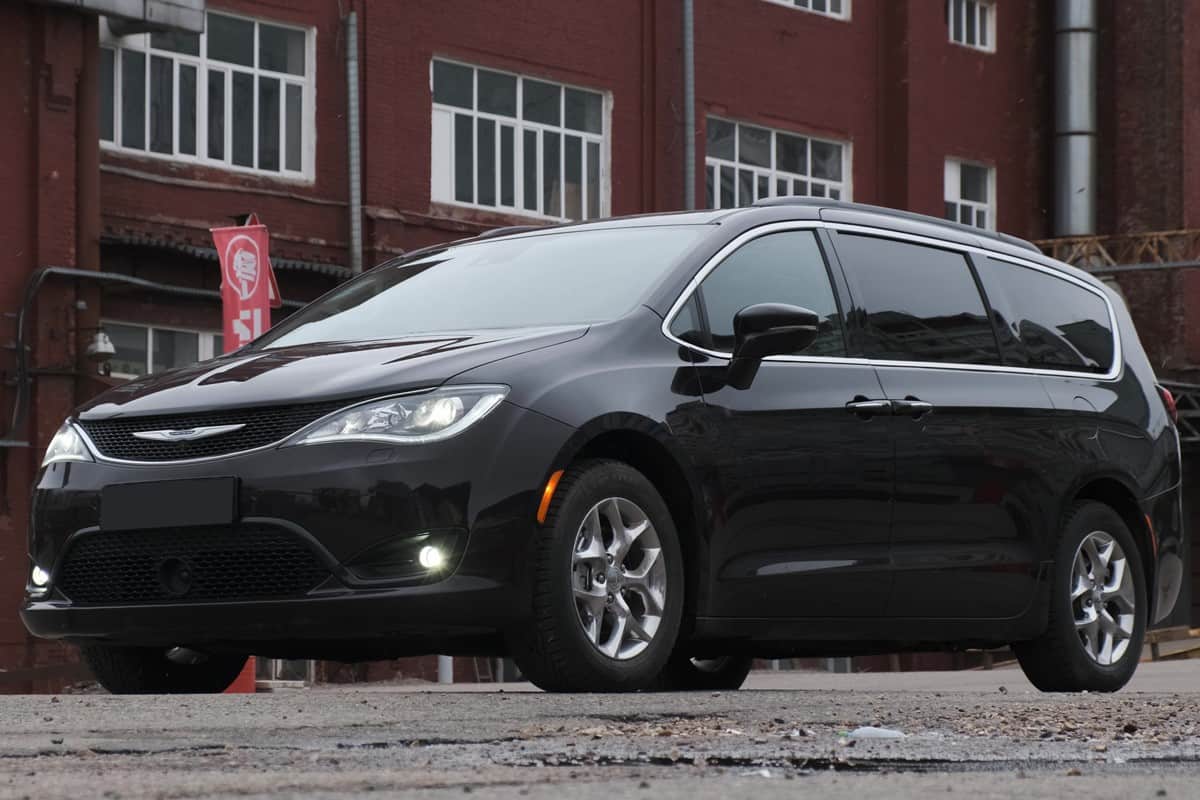
The reasons why the battery in the Chrysler Pacifica keeps dying can be due to one of several causes. Thankfully, most of them can be remedied quickly and easily.
It's recommended to have a set of jumper cables or a portable car battery charger with you when you travel, just in case your battery dies. These handy devices will help you get back on the road when your battery is drained. Drive safe!
We hope this post on the Chrysler Pacifica answered all of your questions. For additional information, we suggest reading the following posts:
How Long Will A Chrysler Pacifica Last? [Inc. Maintenance Issues And Common Problems]
How Many Batteries Does A Chrysler Pacifica Have? [And How Do You Change Them?]
Does Chrysler Pacifica Have a 3rd Row? [Yes! and Here’s What You Need to Know About It]
